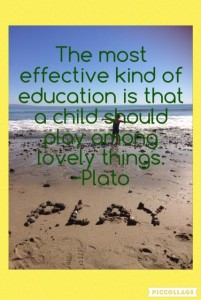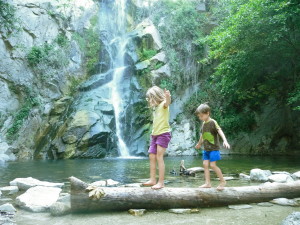
How much time do your students spend interacting with nature? Think about it. What once was an everyday occurrence for kids is now rare and sometimes even non-existent. Students used to walk to school, climb trees and even got dirty. Today children only spend about 1% of their time outdoors. They are usually corralled behind a chain link fence on a concrete surface. We allow them to have a jungle gym and a ball but they are completely removed from nature…
Why does nature matter? Nature allows children to play and interact with the physical laws of the world. To play with a pillbug means to explore the world of crustaceans. To observe water and sand is to get experience with erosion and how substance change when they are mixed. Sticks are great for building (and sword fights). When we give children toys, their function and purpose has been predetermined. Nature provides an open-ended game, wakes curiosity, and has a generally calming effect on the mind and body.
When children are allowed to experience nature it is often within the context of a park or other area altered by man. We tell them, ” Don’t touch this, don’t pick the flowers, please don’t pick up the rocks.” We get upset when they want to interact with their environment in a tactile way. Children’s brains are still developing and so the elementary grade student has to touch her environment, just as much as a baby has to mouth objects, in order to establish the brain mapping of our three-dimensional world. It is a child’s job to make mud pies, throw rocks, and play with sand and water.

Research has shown that playing with nature is an important contributor of healthy development in children. The benefits of reconnecting with nature seem endless:
- Increased concentration
- Better performance on standardized tests
- Reduction of ADD and ADHD symptoms
- greater academic success
- greater impulse control
- stronger immune response
What can be done right now in our classrooms and homes to give children experiences with nature that are so vital to their well-being? One way to bring nature into your classroom is to create a nature center. It could include shells, pinecones, sticks, pebbles , and other interesting things. Allow children to build with the natures center. They will build little worlds of their own right in your classroom. The center can be used for many academic activities but sometimes it helps to just use it as an area of play. Even in our world of high pressure academics, our children sometimes need to be able to do what they were meant to do-play.
